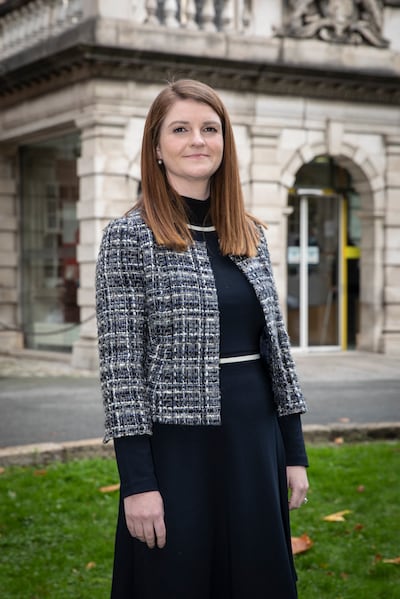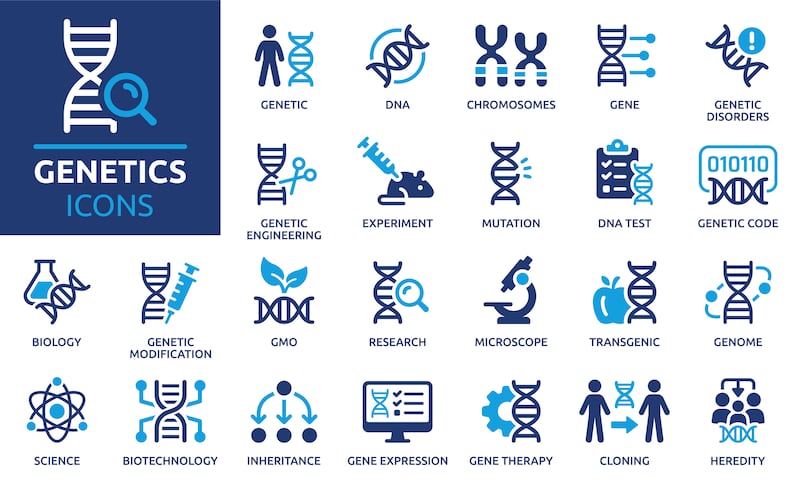This year may prove to be an important year for advances in gene editing and gene therapies.
But what does that really mean, and how have we got to this point?
In what is claimed as a world first, doctors in the United States recently treated a baby with a rare genetic disease using a highly specific and personalised gene-editing technique.
What did this involve and how is the baby doing?
Baby boy KJ was born with a rare metabolic disease known as CPSI deficiency. This prevented his body from getting rid of ammonia during the metabolism of protein. And while he was put on a highly restricted protein diet and given drugs to remove protein from his blood, he remained at high risk of brain damage or even death.
READ MORE
Following the early diagnosis of KJ’s condition, gene-editing researchers at the University of Philadelphia worked with colleagues throughout the US to quickly develop a personalised gene-editing infusion to correct a genetic variant that led to the disorder.
KJ responded well to the three-dose regimen and is now reaching his developmental milestones. “Ultimately, we hope this has set a precedent where we have firmly entered a world of genetic cures on demand,” said Fyodor Urnov, scientific director of the Innovative Genomic Institute in the University of California, Berkeley, a member of the treatment team.
Have similar gene-editing techniques been used on patients in Ireland too and how do they differ from gene therapy?
The gene-editing platform known as Crispr is widely used by researchers in scientific laboratories in their search for new therapies for cancer and other diseases. Essentially, Crispr – whose inventors won the Nobel Prize in chemistry in 2020 – is a cheap and efficient way of finding and altering specific pieces of DNA within cells.
Clinical trials of gene therapies for inherited eye conditions are desperately needed for the treatment of an estimated 5,000 patients on the island of Ireland affected by these diseases
— Dr Emma Duignan
Gene therapy is slightly different in that it introduces new DNA materials into cells to replace or correct a gene or inactivate a target gene in the treatment of a specific disease.
Earlier this year, ophthalmologic surgeon Dr Max Treacy treated 20-year-old Maros Tomko, who had severe visual loss since birth, with gene therapy at the Royal Victoria Eye and Ear Hospital in Dublin. The once-off treatment replaced the faulty gene RPE65 with a healthy copy. This was done via a viral vector which carried the healthy copy of the gene into the cells of the eye.

“Within four weeks, the vision in his eyes had doubled. From not being able to see any letters, he could read the first and second lines. His visual field [the total area seen] also doubled in size,” explains ophthalmologist Dr Emma Duignan. Tomko adds that he is very grateful to the doctors for this opportunity to have surgery. “I can see people’s faces now and I can read the numbers on my bank card for the first time. It’s only three months since the surgery so it will take longer to get better,” he says.
A 31-year-old Sligo man with a similar congenital blindness got his sight back after being treated with ocular gene therapy at the Mater hospital in Dublin in 2024.
Gene therapies, however, remain very expensive and the Royal Victoria Eye and Ear Hospital treatment, which was paid for by the Health Service Executive, cost close to €800,000.
Dr Duignan says it took years for the team to get the funding in place, but such treatments now mean that Dublin will have two potential centres for gene therapy clinical trials. “Clinical trials of gene therapies for inherited eye conditions are desperately needed for the treatment of an estimated 5,000 patients on the island of Ireland affected by these diseases,” says Dr Duignan. Drugs used in clinical trials are made available free of charge.
Manipulating human DNA – the genetic material responsible for life – is like the stuff of science fiction. How is it even possible?
Research into gene therapy goes back to the 1940s and 1950s. The first studies began to recognise that DNA was a transforming substance capable of changing the living characteristics of individuals through a biochemical process. Later, studies identified that human stem cells (mainly found in the bone marrow) could be genetically modified to carry therapeutic DNA which could then differentiate into various cell types to correct genetic defects.

In the 1980s, researchers at Boston Children’s Hospital published a paper to show a virus could be used to insert genes into blood-forming stem cells. These so-called viral vectors later became an established way to deliver specific genetic material to human cells. In the meantime, the Human Genome Project was completed in 2003, paving the way for gene therapy to become a reality for multiple diseases, especially those caused by mutations in a single gene.
What specific diseases are we talking about?
The painful and life-threatening sickle cell disease, a rare genetic immune deficiency disorder called chronic granulomatous disease, and the rare childhood disease adrenoleukodystrophy have all been treated with gene therapy. Genetic diseases including cystic fibrosis, muscular dystrophy, sickle-cell anaemia and haemophilia could potentially be treated with gene therapy.
But are there risks to making such precise changes to the basic building blocks of life?
Yes, there are huge risks, which is why it has taken so long for gene therapy to reach clinical settings. In 1990, four-year-old Ashanthi de Silva became the first patient to be successfully treated with gene therapy. She was given a healthy adenosine deaminase (ADA) enzyme to cure the severe immunodeficiency disorder caused by the absence of ADA. Although she continues to take a drug to keep her condition under control, she leads an active life to this day.
[ Delving into the power of DNA for patientsOpens in new window ]
Throughout the 1990s, European researchers focused on other forms of severe immunodeficiency disorders, reporting the first cures in 2000. However, some years later, five of the 20 treated children developed cancer. The viral vector which had delivered the gene to their T cells (immune cells in the body) had also activated an oncogene, triggering leukaemia. Also in the US, an 18-year-old boy died after receiving gene therapy for a rare metabolic disorder.
These incidents delayed research into gene therapy for almost 10 years. But in the early 2010s, scientists developed better viral vectors that could more precisely target expressions of genes in specific cell types which don’t go astray in the body and don’t trigger an immune response. This spurred further developments in genetic therapies and several gene therapy drugs were approved for use.
The use of messenger RNAs (mRNAs) – as was used in Covid-19 vaccines – also represents a form of gene therapy. In this case, the mRNA vaccine introduces information that cells then use to make the coronavirus spike protein, which then stimulates the person’s immune system to develop antibodies to the virus.
What are the next steps for gene editing and gene therapy?
There are now hundreds of active gene therapy studies around the world and more than a dozen gene therapy drugs on the market, according to researchers at Boston Children’s Hospital.
A more finely tuned approach called base-editing, which uses Crispr technology to chemically change one “letter” of a gene’s code at a time, is deemed to be the next technological advance in genetic therapies. The small changes of base-editing can correct a “spelling error” mutation, silence a disease-causing gene or help activate a specific gene. However, while this approach hasn’t yet been tested in clinical trials, places such as Boston Children’s Hospital have several base-editing projects under way.
Dr Duignan adds that new so-called gene agnostic therapies, which will treat diseases caused by different gene mutations without having to develop a specific infusion for each mutation, represent the next frontier in gene therapy.













